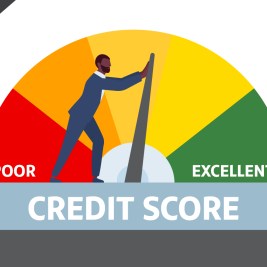The following post originally appeared on our RoadLoans blog, The Open Road.
Do you have new car fever? Make sure you get a good deal on both the new car and the vehicle you are trading by doing your homework before going out to a dealership!
Research trade-in value
When you are considering trading in your used car, you should know the difference between the trade-in value and the loan, or retail, value. The trade-in value is what a dealer will give you for your car in a trade for a new car. The loan value is what a bank will loan you on a new car, and the retail value is the amount for which a dealer could expect to sell a car.
Go online to a website that will allow you to calculate the price. Sites available to you include AutoTrader.com, Kelley Blue Book (KBB.com), BlackBookUSA.com and others where you can get a free trade-in valuation. This gives you a baseline so you can negotiate the best deal.
All about presentation
It is important that you make a good impression when you are about to trade in your vehicle. A shiny and clean trade-in immediately is a nice surprise to the dealer, who will think you took good care of the vehicle and maintained it properly. A dirty, smelly, neglected-looking car makes the dealer think the owner did not maintain the vehicle regularly or take care of it. So before you go to the dealership, give the vehicle you are trading-in a good bath – inside and out!
Negotiating process
When it’s time to take your car into the dealership, go prepared with an idea of its book value. Always negotiate the value of your trade-in after you negotiate the price of a new car. The value of your old car has nothing to do with the price of a new car. If you can’t agree on a trade-in price for your old vehicle at one dealer, consider shopping it around to other dealerships or selling it privately. Book value is always higher on privately sold vehicles because there is no profit margin and no reconditioning cost.
Advantages of trading
Explore other advantages of trading in your car. All but eight states allow you to pay sales tax on the purchase price of a new vehicle less the cash value of your trade-in, so the reduction in sales tax in states with rates of 6 percent to 11 percent can be substantial. And if you owe a balance on your vehicle, the dealer should be able to work the trade into the sales price, paying off your existing loan. Your trade also will reduce the amount you need to finance.
Get your loan first
Finally, let RoadLoans take the worry out of financing your new or used vehicle. With RoadLoans, you can get your loan before you go into the dealership. All you need to do is negotiate your best deal and drive away in your new car. It’s just that simple!
By Debbie Fields



